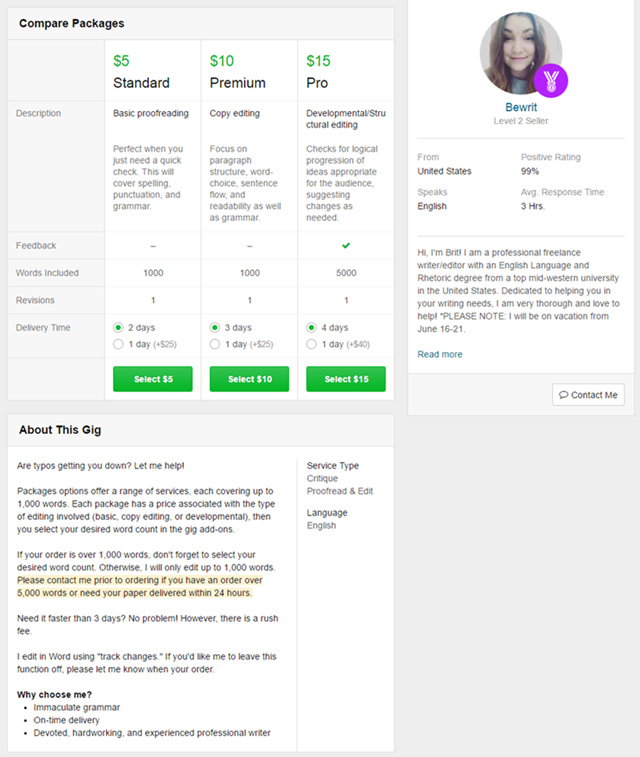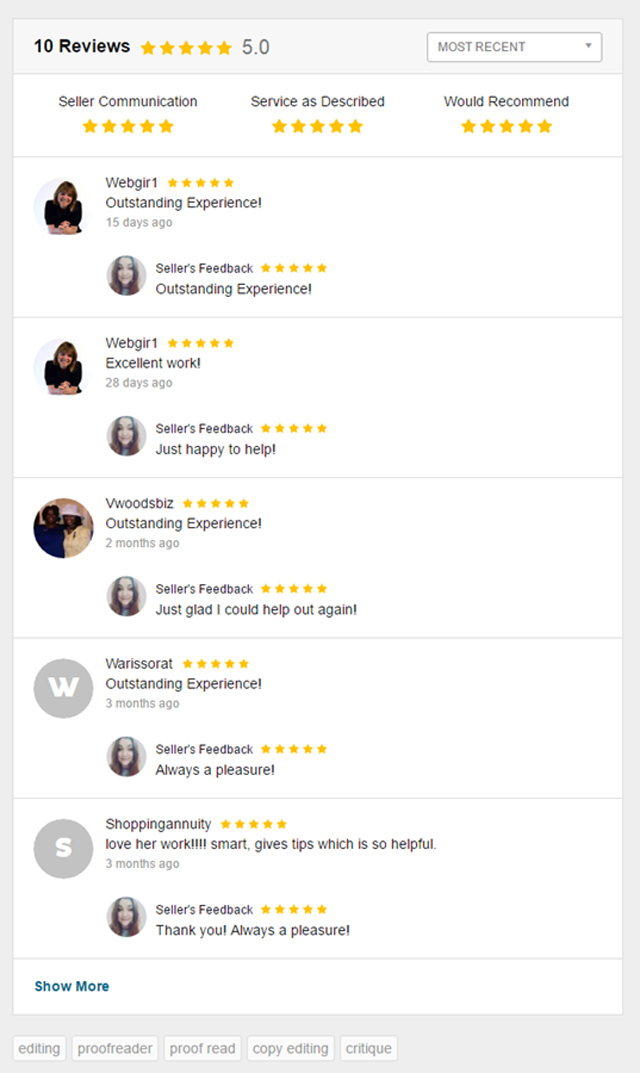
We get it. We really do. One does not simply keep calm and carry on in writing that bomb Resume introduction when you’ve got studies like this, released by an online job search site called TheLadders, saying that recruiters spend only six seconds when reviewing a resume.
As if a 30-second rule in resume writing wasn’t already hard enough, there goes another one that makes getting hired seem even more like a mission impossible.
While we can’t tell for sure how many seconds employers really spend when looking at freelancers’ resumes, we do know that it’s just mere seconds – not a lot. So, there is really no escaping the need to work hard on that Resume introduction. Hence, this lecture.
In addition, watch this video in which a career-advice expert for TopResume reveals what a perfect resume looks like, how to make it scannable, why it’s better to use the summary part instead of an objective and much more.
Got it?
In case you’re still in doubt, let us convince you why you should ditch your objective statement and replace it with a compelling summary saying why you’re the right person for the job.
Objective statements were once the king of resume formats. Professional resume writers gave them the pink slip and replaced them with a new candidate – career summaries. Hiring managers cringe at bland statements telling them what you want.
Of course you want the job. Why else would you apply? Career summaries provide a more condensed introduction to skills, experience and key areas of competence.
If your introduction reads like a date advertisement – “Eligible Executive Assistant seeks position with strong company” – you are in trouble. Remove these lines and replace it with:
Innovative, detail-oriented Executive Assistant with 15+ years of experience helping C-Level leaders optimize their schedules, maintain professional office appeal and restructuring team contribution to improve overall administrative functions. Proven team leader with expertise maintaining executive administrative staff of 10 and coordinating cross-functional teams. Collaborative communicator focused on building cohesive relationships with team members and clients.
To find out five more items to remove from your resume right away, read the full article.
Once you’ve carefully chosen the right words to use and specifically tailored your introduction, it’s time to make it as easy to read and digest as possible.
Here Are a Few Tricks That Will Help You Get To the Point Fast
Make Use of Numbers and Symbols
Numbers and symbols grab more attention than a plain chock-full of text. You can also temporarily forget the rule that says all numbers before 10 should be spelled out.
Aside from quantifying your results, they also help improve your introduction’s readability. Isn’t 37% a lot easier to read than ‘thirty seven percent’? It saves space, making room for more important information.
Go Easy on the All-Caps
Emphasis is important and all-caps is good at doing that. But you want your Why Hire Me statement to be easy to read and an entirely capitalised text can be hard to skim. So, use bold text and all-caps sparingly.
Bullet Points Are Friends, but Not Fairies
When it comes to resume writing, bullet points are your friends but you also need to be smart when using them. Just because they make everything easy to read doesn’t mean you can just throw everything in a bulleted list. Bullet points don’t work like fairy dust that magically fix things.
You also have to keep in mind that a potential employer will more likely read only the first few words in each bullet point so it’s best to keep each point under 2 lines. Keep them short and punchy.
Speak Real English
We have already talked about this, right? Choose words carefully. And by that, we also mean eliminate jargon, acronyms, and unnecessary highfalutin words. Don’t use big, complicated words to appear intelligent. Don’t talk “resume” to an employer.
Check out this helpful tip from The Muse:
Instead of “utilized innovative social media technique to boost readership and engagement among core demographic” say, “posted on Twitter three times a day and brought follower count from 1,000 to 3,000.”
Putting everything in layman’s term with simpler words that are easy to understand will make reading your “Why hire me” section feel like a breath of fresh air.
With only seconds to make a good impression, coming up with an impressive introduction can be a really daunting task. But that is why we have lectures like this to help you, guide you, and encourage you that though it may seem really difficult, it is actually DOABLE.
Just follow our tips as they will help you write an easy to read introduction that will make an impact on your potential employer’s initial decision, and help get you to the next step of the hiring process.
It’s Okay to Ask For Help
If all else fails and your attempts to come up with a really good resume introduction is really not working out, ask for help.
Not everyone will be a good writer. So if you are one of those who are struggling with the writing part, there is no need to lose hope. There’s help available.
There are sub-editors available on Fiverr to help you out. For $5, you’ll have someone to look at your draft and improve it by making changes or providing suggestions for improvement.
If you would consider getting help, here’s an example profile of one of those sub-editors’ that offer proofreading and editing gigs for $5.

This is Brit’s proofreading gig…

Which also comes in different packages:

And 5-star reviews from her previous clients:

There are hundreds of sub-editors available on Fiverr that can help you polish that resume introduction but make sure you choose the best ones by reviewing their profiles and checking for their past clients’ feedback.
These are the kinds of sub-editors you would want to hire from Fiverr to help you improve and polish your resume introduction.
But, don’t rush into asking for these services. There’s a lot more you can learn, which will make you capable of doing it yourself. So, keep learning!
Here are examples of customised Resume introductions that are total #ResumeGoals:
Example #1

Example #2

Example #3

Example #4

Tailoring your Resume is never going to be rainbows and butterflies. On the contrary! It will involve thought and hard work.
These employers are expecting to be persuaded, but if you can impress them with your competencies, then you’ll definitely be able to hit the ground running in your new job.
Some Extra Expert Tips
In this subsection, you’ll find more expert tips, not only on writing the introduction but the whole resume.
Let’s dive deeper into these valuable sources to learn more and set the ground for the following lessons.
In this video, a career expert, Andrew LaCivita, will teach you how to get your resume noticed by employers in 5 seconds:
As suggested in the video, the best way to prove the employer you’ll bring value to the company is to say who you are professionally by highlighting your most valuable contributions in what we called “Why hire me” section at the very top of your resume.
In another video tutorial on how to build the ultimate professional resume (template included), the same award-winning author suggests:
In this section (he calls it Career Profile), include one or two very short paragraphs, which identify:
- Who you are
- What you’ve accomplished
- Summary of proficient skills
Watch the video for more details and examples:
(Note: We’re going to talk about the other important Resume sections in detail in the lessons to come within this course.)
Moreover, the same author further discusses 8 great tips to prove your value on your resume in the next video:
Next, another career strategist, Lynda Raynier, reveals the top ten hacks to make your resume stand out in the following video:
Then, the same expert also suggests how to make a good LinkedIn profile in this video. Although we’re talking about resume in this course, her tips are useful and applicable here as well.
Check them out paying special attention to tip #3 about your Profile Summary.
She mentions some details such as your photo, which we’re going to deal a bit later in this course in depth.
Don’t you find it much easier not only to write the introduction but the whole resume now that you know all this?
Let’s summarise and check our learnings before we dive deeper into the core of each resume – experience and education section.
In Summary
It’s not going to be easy. But it’s going to be worth it.
You’ve surely heard of that before. But it does apply even to resume writing.
If you look back at the most important things discussed in this lecture, you’ll see that writing a resume a potential employer will surely notice actually involves mainly just common sense.
Beginning yours with a description of your unique career path and the skills you have attained is a great way to spark the reader’s interest.
A resume summary is a statement that encompasses your skills, abilities, professional expertise, and what makes you most suitable for the position.
Some of the key elements of a summary statement can include indicating your career direction (as opposed to “objective”), highlighting the amount of relevant experience you have, and mentioning the qualifications that will separate you from other candidates. Source: https://www.thebalance.com/what-is-a-summary-of-qualifications-2063332
You’re applying for a job, trying to make a good impression, what are the things you need to do?





It’s going to be a lot of work – hard work, and it can get quite frustrating at times, but if it ever comes to a point when writing this tiny Why hire me section of your Resume starts to remind you of horrible life experiences like getting a root canal, just bear the following in mind.
By writing a powerful Resume introduction, you are not only saving an employer from the grueling task of going through tons of other resumes. It will also save you from having to compete for that job because chances are, you’re getting hired.
Frequently Asked Questions
1. Should you use common phrases like ‘detail oriented’ or ‘team player’?
a. Yes, people recognise them and know what they mean.
b. Yes, if everybody is doing it, it must be right.
c. No. Cliches only make you end up on a big pile of identical resumes.
2. Should you ask for help from a professional when writing your resume?
a. No! Why would you waste money on something you can do yourself?
b. No. Nobody knows you better than you know yourself.
c. Yes. Professionals are very good at their job and every bit of help makes a difference.
3. Which of the following are action words that you can use in your resume?
a. Develop, process, increase, resolve, design.
b. Dedicated, organised, decisive, responsible.
4. Should you create a new resume for every new job you apply for?
a. No need to do that! Writing about all your work experience once is enough for your lifetime if it’s well presented.
b. Certainly! It’s highly advisable to tailor your resume for each specific job application.
c. No, you should only update it with new pieces of information if any.
